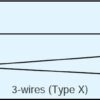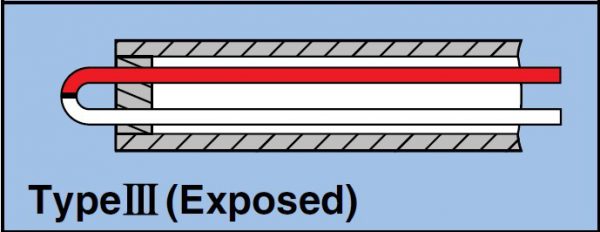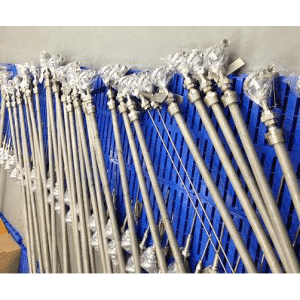RESISTANCE TEMPERATURE DETECTOR (RTD)
The Features Resistance temperature detectors for industrial applica- tions have the following features.
- Good sensitivity.
- Excellent stability and reproducibility.
- High accuracy.
Structure and Measuring MethodsStructure:
Metal wire that changes its electric resistance to changes in temperature are utilized is called“Resistance Wire”. This resistance wire, normally of platinum, is used to manufacture a temperature sensor called“Resistance Temperature Detector(RTD)Element”. Generally speaking,RTD is composed of RTD element, lead wires, protection tube and terminals.
Measuring Methods:
2-Wires Connection: Type W RTD element is connected to respective two wire leads. Although it is less expensive than other types, it is not recommendable for high precision measurement of temper- ature because it is susceptible to lead resistance and pro- duces error.
3-Wires Connection: Type X One end of RTD element is connected to two wire leads and the other end connected to single lead to eliminate the effect from lead resistance. This type is most widely used as a reliable method in industrial applications.
4-Wires Connection: Type Y RTD element is connected to respective two wire leads to remove the effect from lead resistance. This connection cancels lead resistance effect and is especially recom-mendable for high precision measurement of temperature but somewhat expensive than other types.
THERMOCOUPLE (TC)
Features of Thermocouple
Industrial thermocouple, in comparison with other thermometers, has the following features:
- Quick response and stable temperature measurement by direct contact with the measuring object.
- If the selection of a quality thermocouple is properly made, wide range of temperature from −270 to 2,300℃ can be measured.
- Temperature of specific spot or small space can be measured.
- Since temperature is detected by means of EMF generated, measurement, adjustment, amplification, control, conversion and other data processing are easy.
- Less expensive and better interchangeability in comparison with other temperature sensors.
- The most versatile and safe for measuring environments, if a suitable protection tube is employed.
- Rugged construction and easy installation.


















